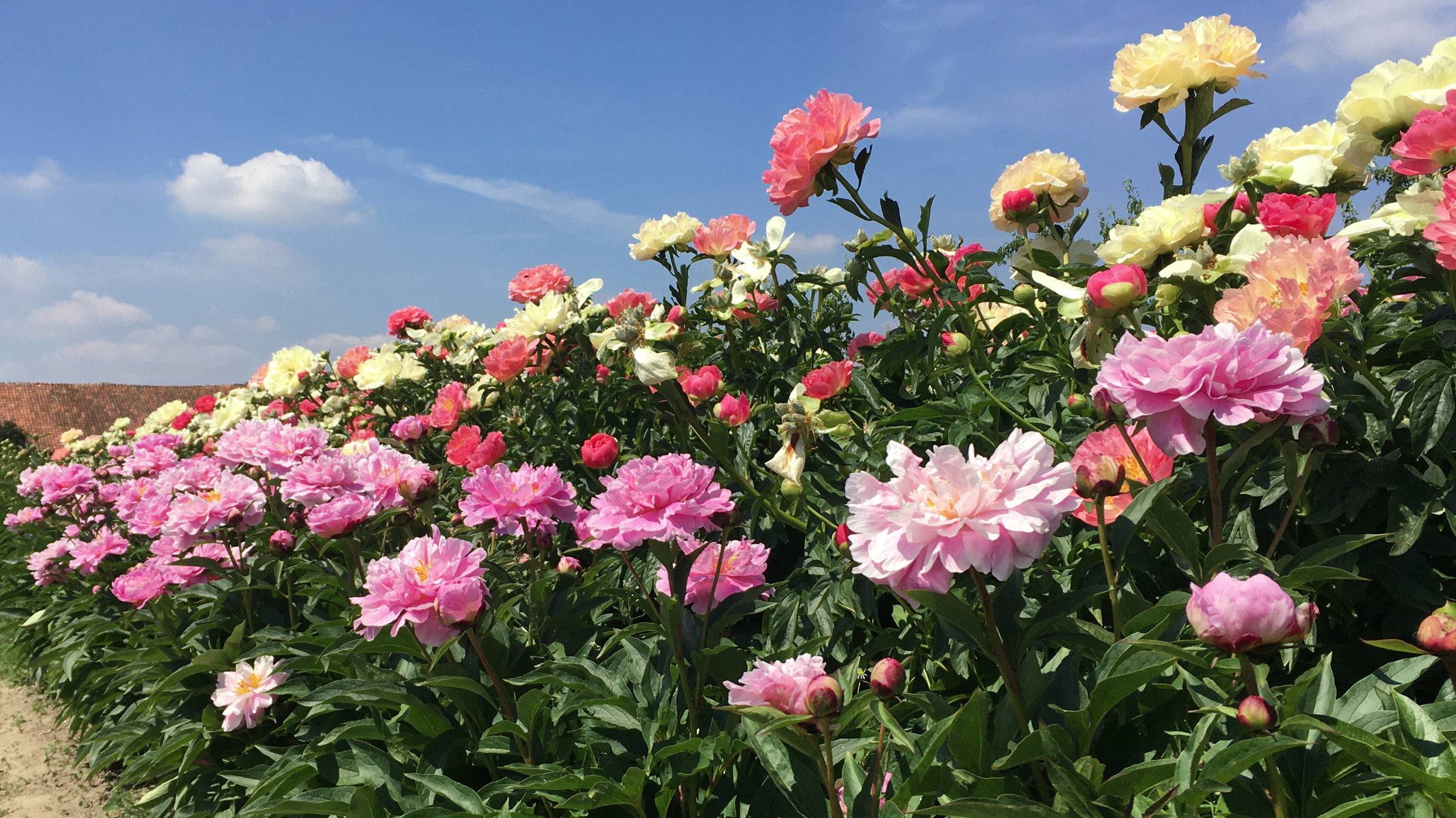
Peonies are hardy temperate climate plants and need a period of frost to induce flowering the following spring. They are easy plants, and real survivors. It produces new shoots in spring. In the winter the herbaceous peony retires underground. We hope that the hints and tips given here will help you to grow healthier and stronger peonies next season.
Soil
A well-drained soil is essential. Peony roots are like thick carrots; they will not thrive in waterlogged soil. Peonies will grow in most types of soil, but they prefer well-cultivated, heavier soils. Adding garden compost to sandy and heavy clay soils will improve the structure and provide a better water and nutrient base.
Location
A peony can live to a very old age, 50 years is no exception. It is therefore important to choose the right location from the start. Always give them plenty of space, from 50 cm for a small, compact peony to 1 m for a large-growing variety. Peonies should not be planted under trees or shrubs. Competing with established trees and shrubs for light, air, moisture and nutrients is a strenuous business. Provide plenty of sunlight and, equally important, air circulation. A herbaceous peony needs at least 6 hours of sun.
 |
PlantingPlant in sufficiently deep loosened soil with added compost. You will need to use a spade. Mix extra horn shavings, bone meal and/or any other SLOW release fertiliser into the planting hole. Light soils will benefit from the addition of potash or potassium fertiliser. Don't allow the roots to touch the fertiliser.When planting a peony, do not plant the eyes more than 4-5 cm below the surface of the soil. In warmer areas it should be no less than 2-3 cm below the soil surface. A bare-root peony is best planted in autumn to give the plant time to develop new hairroots. Container peonies can be planted all year round. In a very hot summer it is best to delay planting until early autumn. |
Aftercare
If you plant in spring, check regularly, especially in the first year, that your plant has enough water during hot summer days. Water generously once or twice a week at the most, rather than small amounts every day.
If you plant in autumn, the peony will produce its hair roots in situ, which are its guarantee for the future. The new roots will anchor the young plant and provide moisture in the event of drought next spring. When mature, the roots reach a depth of 50 cm. A peony root planted in the autumn in a well-prepared spot is self-sufficient. Peonies in our fields are not watered.
Cut the top growth back to 10cm before winter and remove it from the garden.
They need frost to flower the following year. Do not mulch unless you live in a harsh (polar) climate, and even then it is questionable whether you should cover your peony all year round.
Give your peony a regular dose of slow-release fertiliser once a year.
Diseases
If your peony shows signs of fungal infection on leaves, shoots or flowers, cut out the affected parts and remove them from the garden. Also pick up and remove any fallen leaves and spent flowers. If you wish to use a fungicide, several are available from garden centres, always use as directed. However, your first concern should be to get to the root of the problem. Stuffy conditions and poor water management are obvious areas to tackle first.
Pests
Ants are not pests. They love the sugary substance that peony buds secrete. They take it home to their loved ones. Once the substance is gone, they stop coming for more. Itoh peonies do not secrete this substance and could be a lovely alternative if the ants annoy you.
More
On Facebook and Instagram we try to address different peony-related issues. In doubt, please feel free to use the contact form to pop your question.
Happy planting,
Graefswinning
